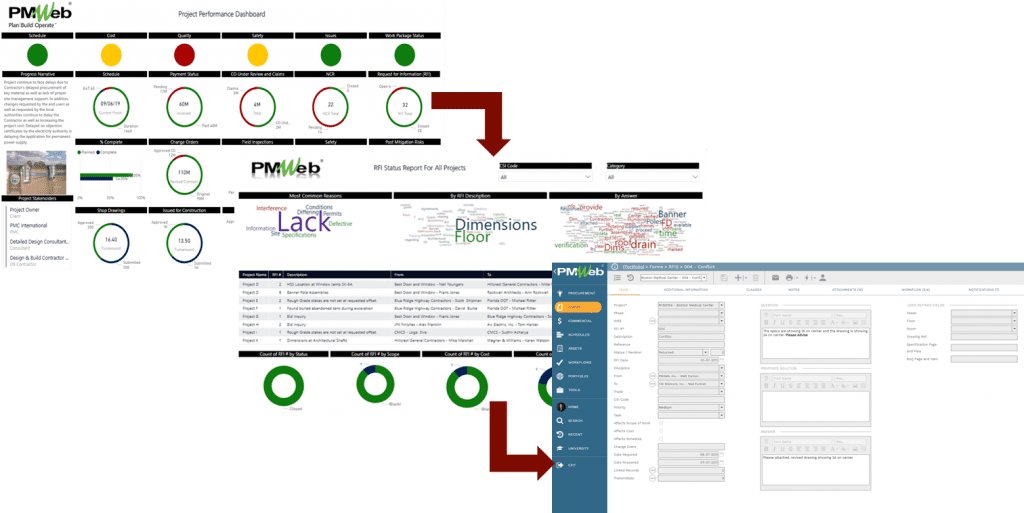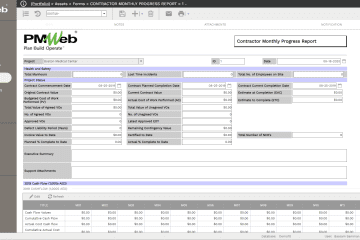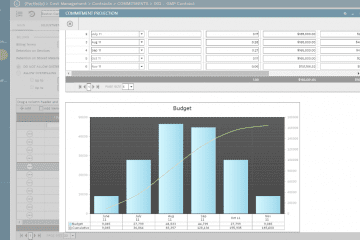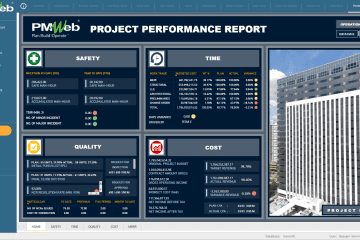I remember those days in the early 1990’s when I used to prepare the project’s performance reports using MS Excel and print on transparent pages so I can present the performance reports using the overhead projector to executive project stakeholders. The histograms, pie charts, and other visuals were very much fixed and agreed on. Those executive stakeholders had to trust me when I presented the performance information.
Well, now things have changed. Executive project stakeholders can now have immediate access to business intelligence and data visualization tools like MS Power BI to have insight on how a project, a program of projects, or a portfolio of projects are performing. They can use those tools to access projects’ performance information on their own, anytime, anywhere by using any smart mobile device. Nevertheless, the one thing that did not change that all those reports and dashboards need data to be viewed, assessed, analyzed, and reported on.
Executive project stakeholders can have access to two types of project data. The first type of data is the data that is manually captured by the project team using MS Excel. Although no one should challenge the correctness and trustworthiness of this manually captured data, at the same time no one can also deny that the data needs to be captured on multiple MS Excel files by different project teams manually extracting and uploading the data into those files. In addition, no one can also deny that this data will not be real-time, and tracing the source of the captured data would need to be manually done. In addition, issues that relate to data accuracy and completeness, as well as MS Excel file size and storage location, are also risks that need to be considered. With the COVID-19 pandemic constraints of work from home (WFH), social distancing, travel quarantine among others, the option of having the manual data capturing using MS Excel can become more challenging if executive project stakeholders need to have access to trustworthy, real-time, and interactive projects’ performance status reports and dashboards.The second option is to use a Project Management Information System (PMIS) like PMWeb to have a single data source for storing all projects’ data, documents, and relevant MS Outlook emails that is 100% web-enabled to allow project stakeholders to have secured and controlled access to the project’s data anytime, anywhere. The projects’ data and documents will be automatically captured when executing the different project management processes that are managed in PMWeb. The data for those processes will be provided by the individuals who have been assigned to execute those processes in accordance with the workflow tasks that we were developed and assigned to those processes as per the project management plan (PMP) also known as the project execution plan (PEP).
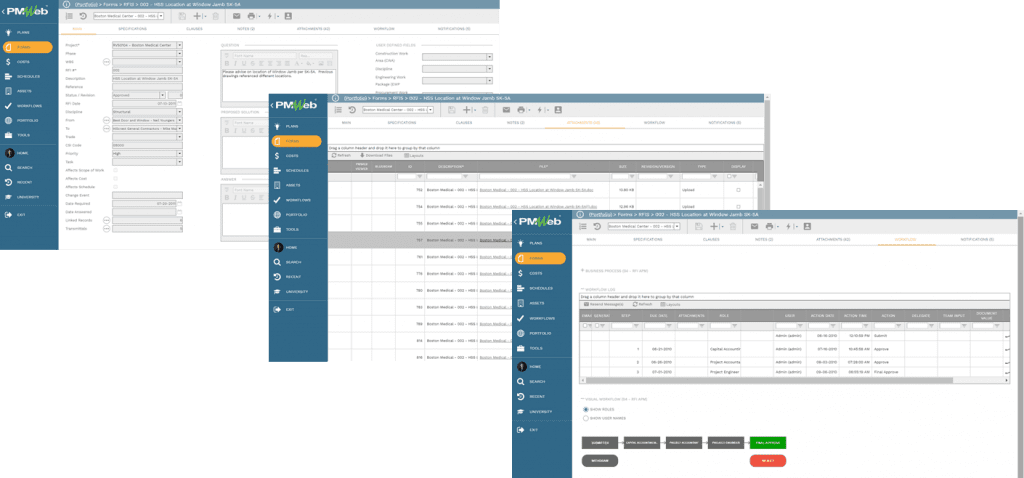
The PMWeb database, which will be either hosted on the organization’s own data center or hosted by PMWeb, can be accessed using business intelligence and data visualization tools like MS Power BI as long as the required security and credentials are provided. Of course, there are different options when it comes to visualizing the data to report on which depends on each organization’s data security and type of required reporting. The organization also needs to determine the frequency for refreshing the reported data. In addition, many organizations might opt to create data models to define how the logical structure of the PMWeb database will be modeled. Data Models define how data is connected to each other and how they are processed and stored inside the system.
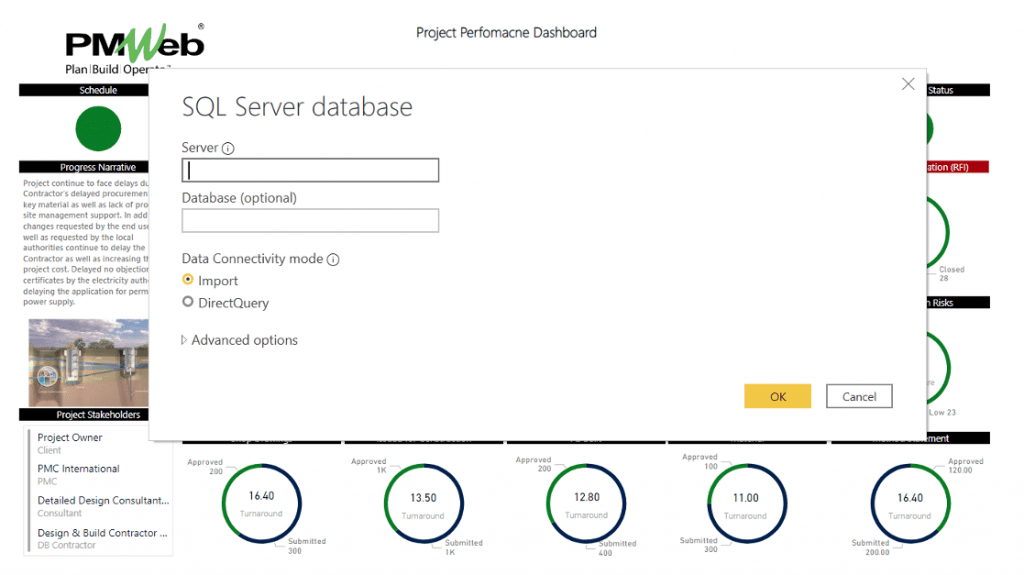
By having real-time access to this massive wealth of data for every single project managed by the organization using PMWeb, organizations can create their own interactive reports and dashboards. The report users can filter, sort, and view data the way they want. Access to those reports and dashboards can be also controlled by the organization to ensure that data is consumed and visualized by the authorized users only.

Similarly, interactive dashboards that are designed for a single project, program of projects, or portfolio of projects can be created to provide the needed analysis in any desired form and format. Those dashboards would usually report on multiple project management processes that are related to a specific project management perspective like procurement, commercial, HSE, quality among others. In addition, dashboards tend to use graphical visuals rather than tables. Those visuals could include for example histograms, line charts, pie charts, donut charts, gauges, maps among others.
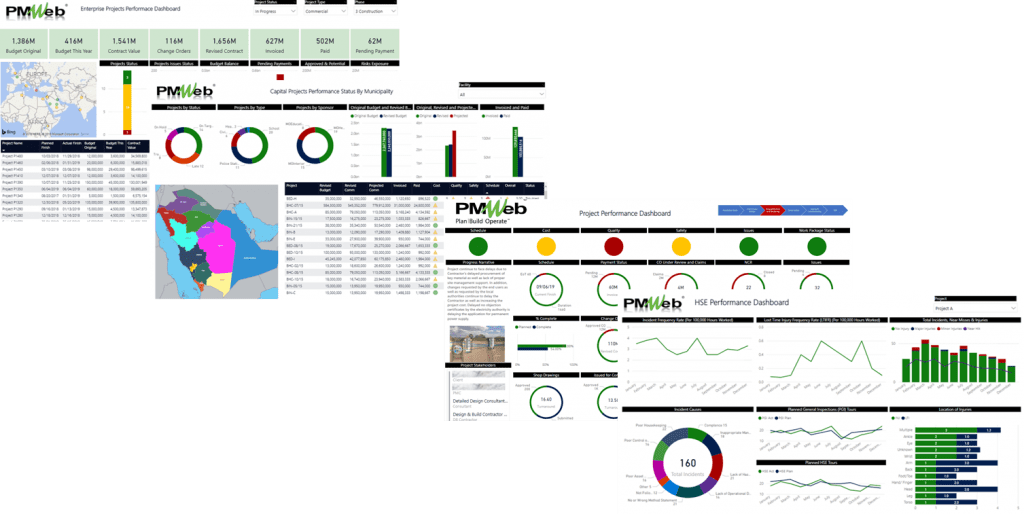
MS Power BI, which is one of the most widely uses business intelligence and data visualization tools, also allows creating links between dashboards and reports to allow the executive project stakeholder to drill down from dashboards to reports. The reports can be also configured to be linked to the PMWeb application by providing a hyperlink to each relevant PMWeb record so it can be accessed and viewed when needed. This option not only enforces the trustworthiness of the reported data but also enables the reader to trace the source of the reported projects’ data, supportive documents, linked records and emails, and review and approvals tasks captured in the record’s workflow.
